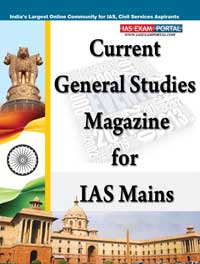
Current General Studies Magazine (March 2016)
General Studies - II "International Relations Based Article" (A strategic relationship with Iran)
The Prime Minister’s visit has given India another chance to craft a strategic relationship with Iran andto enhance its influence in West Asia. But New Delhi has its work cut out for it
Prime Minister Narendra Modi’s recent visit to Iran marks a new beginning in bilateral relations and beyond. The centrepiece of the trip was the basket of agreements on the development of the Chabahar port and onward connectivity with Afghanistan. The government deserves praise for the manner in which various pieces of this were put in place. The ground was prepared by extensive interaction of key Ministries — External Affairs, Transport, Finance and Petroleum — with their Iranian counterparts to overcome persistent hurdles and ensure synergies. In consequence, we have a set of interlinked outcomes: a contract for the development and operation for 10 years of two terminals and five berths; the extension of credit lines of $500 million for the port and of Rs.3,000 crore for importing steel rails and implementation of the port; memorandums of understanding on provision of services by Indian Railways, including financing to the tune of $1.6 billion, for the Chabahar-Zahedan railway line — a line that is also part of the trilateral agreement between India, Iran and Afghanistan on a transit and trade corridor.
Years in the making
To be sure, the real challenge for India is in delivery. If MoUs were an index of influence, New Delhi should have had a lot more of it. Still, the level of coordination within the government is noteworthy given that it has taken us nearly 13 years since the idea was first mooted. The proposal was mired in three sets of problems. The Finance Ministry initially applied the brakes on plans for development of the port, insisting that there had to be a certain assured return on investment for the project. The strategic import of the project, especially by way of providing access to Afghanistan, did not figure in their calculations. By the time the Ministry was persuaded of the need to press ahead, other complications had crept into the picture.
This brings us to the second problem: the United States’s sanctions on Iran. Although the Indian government claimed that it would not adhere to any unilateral sanctions, in practice it took a cautious tack. The danger of exposing Indian banks and companies to indirect American sanctions for dealing with Iranian entities bulked large in the government’s thinking. Interestingly, this view continued to hold sway in some sections of the government even after Iran began accumulating billions of rupees in a UCO Bank account owing to India’s inability to pay for energy imports in U.S. dollars. In fact, this period of Iranian isolation and dependence on India afforded us considerable leverage — both in pushing our exports to Iran and in pressing forward with Chabahar. But this opportunity was frittered away owing to the third, and arguably most important, problem.




















